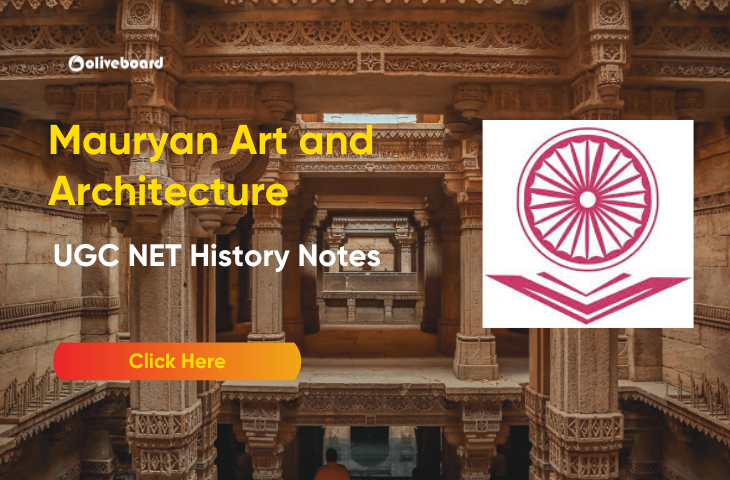Major Sites of Indus Civilization: The Indus Valley Civilization (IVC), one of the world’s earliest urban cultures, flourished around 3300–1300 BCE along the Indus River basin. It was marked by impressive architectural feats, advanced urban planning, and a complex social structure. This civilization left behind remarkable archaeological sites, each offering unique insights into the lives, beliefs, and ingenuity of its people. This article explores the major sites of the Indus Civilization, showcasing their unique contributions to our understanding of this ancient culture.
Key Features of the Indus Civilization
The civilization is renowned for its:
- Advanced urban planning
- Systematic drainage systems
- Extensive use of baked bricks for construction
- Development of a non-deciphered script
- Evidence of trade relations with Mesopotamia and other regions
Let’s explore the major sites of the Indus Civilization and what makes each of them unique.
Table of Contents
- Harappa
- Mohenjo-Daro
- Dholavira
- Lothal
- Kalibangan
- Rakhigarhi
- Banawali
- Surkotada
1. Harappa
Location: Punjab, Pakistan
Discovered: 1921 by Daya Ram Sahni
Harappa was the first site to be discovered, and it gave the Indus Civilization its alternative name, the Harappan Civilization. The site showcases a well-planned urban settlement with streets arranged in a grid pattern. Harappa’s features include granaries, citadels, and an advanced drainage system.
Key Findings at Harappa:
- Granaries: Evidence of large granaries points to organized food storage and possible trade.
- Bead-Making and Terracotta Figurines: Items such as jewelry, pottery, and terracotta figures suggest a rich cultural life.
- Burial Practices: Harappan burial grounds reveal insights into their social and religious beliefs.
2. Mohenjo-Daro
Location: Sindh, Pakistan
Discovered: 1922 by R. D. Banerji
Mohenjo-Daro, meaning “Mound of the Dead,” is one of the most well-preserved cities of the Indus Civilization and is often considered the most advanced. The city’s infrastructure includes brick buildings, a sophisticated drainage system, and a distinct residential and public area.
Key Features of Mohenjo-Daro:
- The Great Bath: An enormous water tank that likely had ritualistic purposes, highlighting the importance of water in religious practices.
- Granary and Assembly Hall: Massive buildings suggest communal activities and food storage.
- Statue of a Priest-King: A figure that reflects high craftsmanship and possibly the ruling class’s attire.
3. Dholavira
Location: Gujarat, India
Discovered: 1967-68 by J. P. Joshi
Dholavira is known for its sophisticated water management system, which was critical given the site’s arid location. The site stands out for its elaborate reservoirs, step-wells, and stone masonry structures.
Noteworthy Aspects of Dholavira:
- Water Conservation System: A network of reservoirs and water channels reflects advanced water management techniques.
- Giant Signboard: An inscription with large letters, believed to be one of the earliest examples of a signboard.
- Citadel: Fortified with stone walls, indicating a defensive structure and possibly an administrative center.
4. Lothal
Location: Gujarat, India
Discovered: 1954 by S. R. Rao
Lothal is widely recognized as an important port city of the Indus Civilization, pointing to extensive trade networks across the Arabian Sea. Lothal’s unique features reveal a society with commercial expertise and advanced maritime knowledge.
Significant Features of Lothal:
- Dockyard: An artificial dockyard, one of the oldest in the world, showcasing expertise in water transport.
- Bead Factory: Evidence of bead-making and other craft industries indicates a thriving trade center.
- Acropolis and Lower Town: A unique city layout divided into sections based on function and social hierarchy.
5. Kalibangan
Location: Rajasthan, India
Discovered: 1953 by A. Ghosh
Kalibangan is notable for its fire altars, which suggest religious practices and rituals. Its city layout also provides insight into the social structure of the Indus Civilization.
Key Discoveries at Kalibangan:
- Fire Altars: Structures believed to have been used in rituals, showing religious practices among the Harappans.
- Ploughed Field: The discovery of a ploughed field provides evidence of agricultural activities and crop cultivation techniques.
- Brick Platforms: Raised platforms possibly used for residential or religious purposes.
6. Rakhigarhi
Location: Haryana, India
Discovered: 1963 by Archaeological Survey of India (ASI)
Rakhigarhi is one of the largest known sites of the Indus Civilization, spanning over 224 hectares. The site provides a wealth of information about the later phases of the Harappan Civilization.
Significant Findings at Rakhigarhi:
- Human Burials: Evidence of elaborate burial practices with pottery and other grave goods.
- Craftsmanship: Discovery of jewelry-making workshops and tools reflects a skilled craft tradition.
- Early Settlement Structures: Mud-brick structures suggest an organized settlement layout.
7. Banawali
Location: Haryana, India
Discovered: 1973 by Archaeological Survey of India (ASI)
Banawali provides evidence of both Pre-Harappan and Harappan phases, showcasing a transition in urban planning and architecture.
Highlights of Banawali:
- Two-Phase Architecture: Distinct Pre-Harappan and Harappan levels indicating continuous settlement.
- Pottery and Terracotta Figurines: Unique pottery styles and figurines reflect the artistic side of the Harappans.
- Agricultural Evidence: Implements used for farming reveal their agrarian-based economy.
8. Surkotada
Location: Gujarat, India
Discovered: 1964 by J. P. Joshi
Surkotada is notable for its fortified structures, indicating defensive strategies. It also provides evidence of horse remains, which has led to debates among scholars about horse domestication in the Indus Valley.
Distinct Features of Surkotada:
- Fortified Citadel: Evidence of fortifications shows an emphasis on security.
- Animal Remains: Possible horse remains, though debated, suggest the Harappans may have known about horses.
- Residential and Burial Areas: Clear segregation of residential and burial zones in the site layout.
Comparison Table of Major Indus Civilization Sites
The Major Indus Civilization Sites provides a concise overview of each site’s unique features, location, and year of discovery.
| Site | Location | Key Features | Discovery Year |
| Harappa | Punjab, Pakistan | Granaries, advanced urban layout | 1921 |
| Mohenjo-Daro | Sindh, Pakistan | The Great Bath, citadel, drainage system | 1922 |
| Dholavira | Gujarat, India | Water reservoirs, stone masonry, citadel | 1967-68 |
| Lothal | Gujarat, India | Dockyard, bead-making industry, acropolis | 1954 |
| Kalibangan | Rajasthan, India | Fire altars, ploughed fields | 1953 |
| Rakhigarhi | Haryana, India | Burial grounds, jewelry-making | 1963 |
| Banawali | Haryana, India | Two-phase architecture, pottery | 1973 |
| Surkotada | Gujarat, India | Fortifications, potential horse remains | 1964 |
Conclusion
The major sites of the Indus Civilization reveal an incredibly advanced society that excelled in urban planning, agriculture, trade, and art. Each site provides valuable insights into the daily lives, social structures, and technological achievements of the Indus Valley people. These discoveries not only highlight the civilization’s grandeur but also underscore its historical significance in shaping early human societies.
Major Sites of Indus Civilization – FAQs
Ans. Major sites include Harappa, Mohenjo-Daro, Dholavira, Lothal, and Kalibangan.
Ans. Harappa is located in present-day Punjab, Pakistan.
Ans. Mohenjo-Daro is known for its advanced urban planning and sophisticated drainage system.
Ans. Dholavira is famous for its water conservation systems and large-scale architecture.
Ans. Lothal was a prominent dockyard city that facilitated maritime trade with other civilizations.
Ans. Kalibangan is known for its distinctive pottery and evidence of early agriculture.
- Ancient History of India – UGC NET History Notes

- Emergence of Regional Powers in Early Medieval India- UGC NET History Notes

- Emergence of Heterodox Sects – UGC NET History Notes

- UGC NET History Previous Year Question Paper, PDF Download

- Sangam Literature – UGC NET History Notes

- Mauryan Art and Architecture – UGC NET History Notes


Hello there! I’m a dedicated Government Job aspirant turned passionate writer & content marketer. My blogs are a one-stop destination for accurate and comprehensive information on exams like Regulatory Bodies, Banking, SSC, State PSCs, and more. I’m on a mission to provide you with all the details you need, conveniently in one place. When I’m not writing and marketing, you’ll find me happily experimenting in the kitchen, cooking up delightful treats. Join me on this journey of knowledge and flavors!
